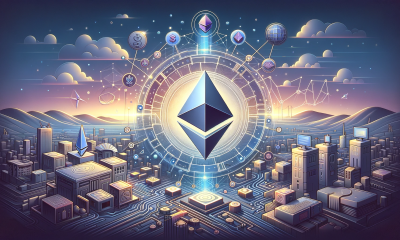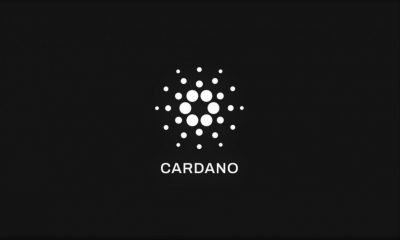Polkadot Investor
Polkadot Vs. Ethereum – What’s the Difference?

Securities.io maintains rigorous editorial standards and may receive compensation from reviewed links. We are not a registered investment adviser and this is not investment advice. Please view our affiliate disclosure.
Table Of Contents
Understanding the differences between Polkadot (DOT) vs Ethereum (ETH) is a smart way to improve your overall trading skills. Anyone who has traded crypto for a significant period of time can tell you that Polkadot and Ethereum are two projects with significant followings in the market. Both of these blockchains provide secure smart contract programmability with full support for DeFi (decentralized finance) Dapps.
While these networks serve similar roles, they operate in a very different manner. Ethereum was the first blockchain to introduce smart contracts to the market successfully. This network remains a pioneering force in the industry. However, it does lack in terms of scalability and functionality compared to today's latest networks. Here’s some insight into the Polkadot (DOT) vs Ethereum (ETH) debate.
Shared History
The first thing to understand is that Ethereum and Polkadot share a history. If Ethereum never succeeded, it is very likely that Polkadot would have never been an idea. This assumption can be made because Polkadot was founded by Ethereum co-developer, Gavin Wood.

Polkadot (DOT) vs Ethereum (ETH) – Twitter
Wood, who operated as the CTO and core developer on the protocol is one of the most recognizable and respected developers in the market. He invented the Solidity programming language which remains a core component of Ethereum. In early 2016, Wood decided to leave Ethereum to create a blockchain suited to the direction he saw the market heading. Polkadot was born out of this desire.
What is Polkadot?
Polkadot is a flexible decentralized network designed to connect blockchains securely. Developers can connect networks using Polkadot as a secure connectivity layer. The network enables developers to decide how much integration to leverage. This technical structure makes it easier to build Dapps. It introduces some new concepts to the crypto market which enables the network to offer lower fees and easier programmability.
Parity Technologies is the official company behind the project. This group originally operated as EthCore. In October 2017, the network hosted an ICO (initial coin offering) that secured $245 million. The ICO made headlines as one of the largest to date.

Ethereum -Twitter – Polkadot (DOT) vs Ethereum (ETH)
In 2018, Polkadot launched its testnet successfully and secured additional funding from the Web3 Foundation to further the network. Later in the year ChainSafe and Soramitsu received grants to implement the Polkadot Runtime Environment in Go and C++. Today, Polkadot encompasses a large ecosystem with new developers and users joining the network daily.
What is Ethereum?
Ethereum launched in 2013 as an early comer to the market. Vitalik Buterin is Ethereum’s founder and lead developer. He launched the protocol with the goal to streamline Dapp development and drive blockchain adoption. Like Polkadot, Ethereum hosted one of the largest ICOs of its time. The network raised $18 million from 11,000 international investors. This funding helped the network become what it is today.
Ethereum changed the market forever, as it switched the focus of cryptocurrencies from acting as money to supporting Dapps. Decentralized applications are a key component of the blockchain sector. Interestingly, Ethereum is often confused with its utility token ETHER (ETH). Ether is the token that enables smart contracts to run on the Ethereum blockchain.
Ethereum is the world's largest Dapp ecosystem and the second-largest PoW (Proof-of-Work) in the world. Ethereum has seen considerable growth as the DeFi movement has leveraged its proven security. Today, Ethereum is the largest DeFi network in operation. The protocol remains a top choice for developers. However, there are some technical restrictions the network suffers from.
What Problems was Polkadot (DOT) Built to Alleviate?
Polkadot was built to provide an alternative to Ethereum that offered lower fees and more scalability. Polkadot integrates a sharded infrastructure to accomplish this task. Additionally, It enables developers to leverage multiple blockchains securely to build next-gen applications. To achieve this task, the network introduces the concept of parachains and parathreads.
What Problems was Ethereum (ETH) Built to Alleviate?
Ethereum was built to simplify Dapp development. It was the first protocol to introduce smart contract scripting functionality to decentralized networks. The developers wanted to make it easy for people to enter the ecosystem. As such, they made Ethereum flexible in terms of programming languages. Ethereum developers may use C++, Java, JavaScript, Python, Ruby, and more.
How Does Polkadot Work?
Polkadots uses parachains and apartheids to improve interoperability in the blockchain sector. Parachains are sovereign blockchains. They may have their own features, services, consensus, and tokens. These networks may also create their own governance systems. Parachains are best suited for specific use case scenarios.

Polkadot (DOT) Charts – Polkadot (DOT) vs Ethereum (ETH)
Parathreads are networks that are designed to service Dapps that only require minimum blockchain integration. These networks operate on a pay-as-you-go model. This approach lowers the overall cost of integrating blockchain networks into most applications. Polkadot also integrates special bridges to communicate data between private and public networks.
How Does Ethereum Work?
Ethereum is a Proof-of-Work (PoW) network that relies on miners to approve transactions and validate the state of the network. Developers create programs called smart contracts that execute within the EVM (Ethereum Virtual Machine). The cost of executing these programs is called gas. The more complex the smart contract and the higher the gas fees.
Ethereum is in the middle of a significant upgrade. The network will shift to Ethereum V2 in the coming months. This switch will include a change to a Proof-of-Stake (PoS) consensus mechanism. This maneuver will lower the operating costs and validation costs for the network. Currently, Ethereum has record-high gas fees.
Scalability
Polkadot is a high-performance blockchain that can handle over 1000 transactions per second. In comparison, Ethereum supports 13-30 transactions per second in its current state. It’s also far cheaper to send DOT compared to ETH at the moment.
Tokens
Polkadot uses the DOT Token as part of its electronic payments system and decentralized smart contract environment. The token is flexible in that it can be staked to secure passive returns. You can also use it to participate in the Polkadot DAO (decentralized autonomous organization). This feature enables users to put forth proposals and upgrades to the network. The community votes on the changes, with approved measures funded from the community chest.

Ethereum – CoinMarketCap
Ethereum relies on ETH as its main utility token. This successful coin is one of the most widely accepted cryptos in the world. Users can stake and farm ETH to secure ROIs. ETH token holders can put significant updates to a vote between miners. The protocol will also leverage off-chain communications and support methods to get changes introduced.
How to Buy Polkadot (DOT) and Ethereum (ETH)
Currently, Polkadot (DOT) and Ethereum (ETH) are each available for purchase on the following exchanges.
Uphold – This is one of the top exchanges for United States residents that offers a wide range of cryptocurrencies. Germany & Netherlands are prohibited.
Uphold Disclaimer: Terms Apply. Cryptoassets are highly volatile. Your capital is at risk. Don’t invest unless you’re prepared to lose all the money you invest. This is a high-risk investment, and you should not expect to be protected if something goes wrong..
Kraken – Founded in 2011, Kraken is one of the most trusted names in the industry with over 9,000,000 users, and over $207 billion in quarterly trading volume.
The Kraken exchange offers trading access to over 190 countries including Australia, Canada, Europe, and is a top exchange for USA residents. (Excluding New York & Washington state).
Polkadot (DOT) vs Ethereum (ETH)
Like an epic tale of titans in Greek mythology, Polkadot vs Ethereum pits two close relatives against each other. Both of these networks can provide you with the services needed to create powerful Dapps to serve clientele. Additionally, both have proven to be long-term projects to watch. For these reasons, it’s smart to hold both of these tokens in your portfolio.
To learn more, make sure to visit our Investing in Polkadot (DOT) and Investing in Ethereum (ETH) guides.
David Hamilton is a full-time journalist and a long-time bitcoinist. He specializes in writing articles on the blockchain. His articles have been published in multiple bitcoin publications including Bitcoinlightning.com
You may like


Investing In Polkadot (DOT) – Everything You Need to Know


Investing In Ethereum (ETH) – Everything You Need to Know


Investing In Chainlink (LINK) – Everything You Need to Know


Investing in Polygon (POL) – Everything You Need to Know


Investing In Cardano (ADA) – Everything You Need to Know


Investing In Solana (SOL) – Everything You Need to Know